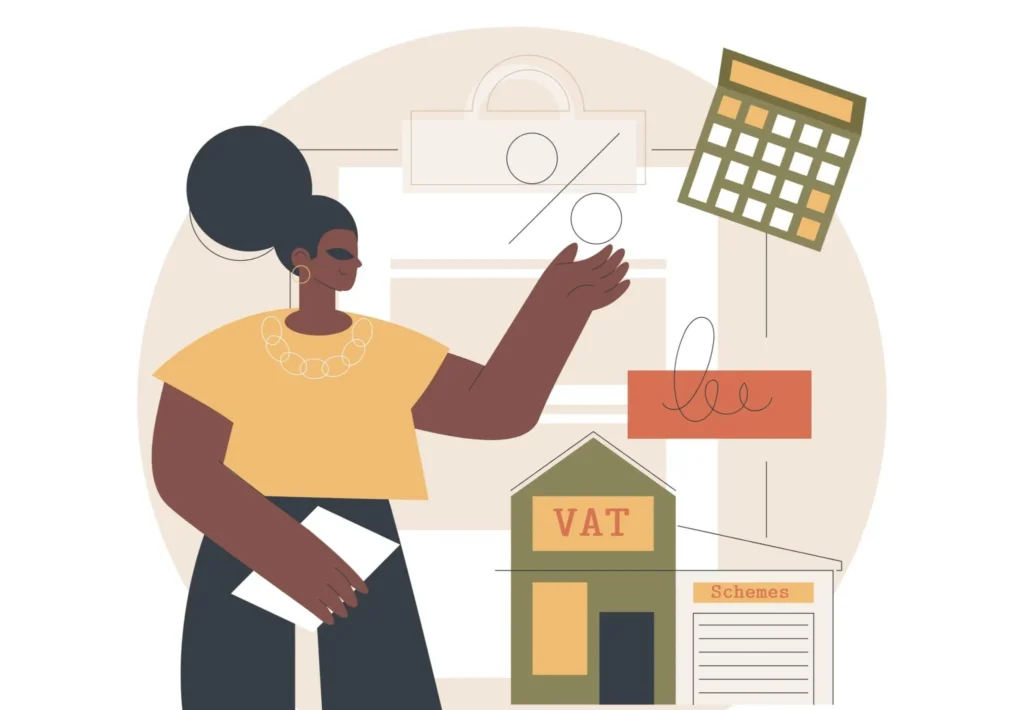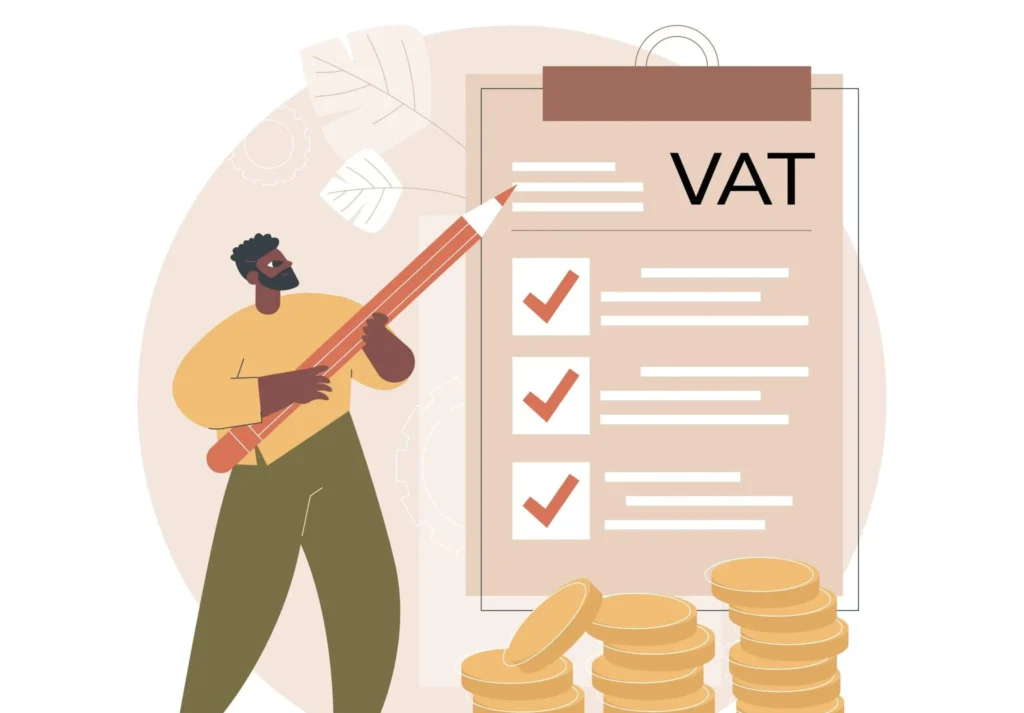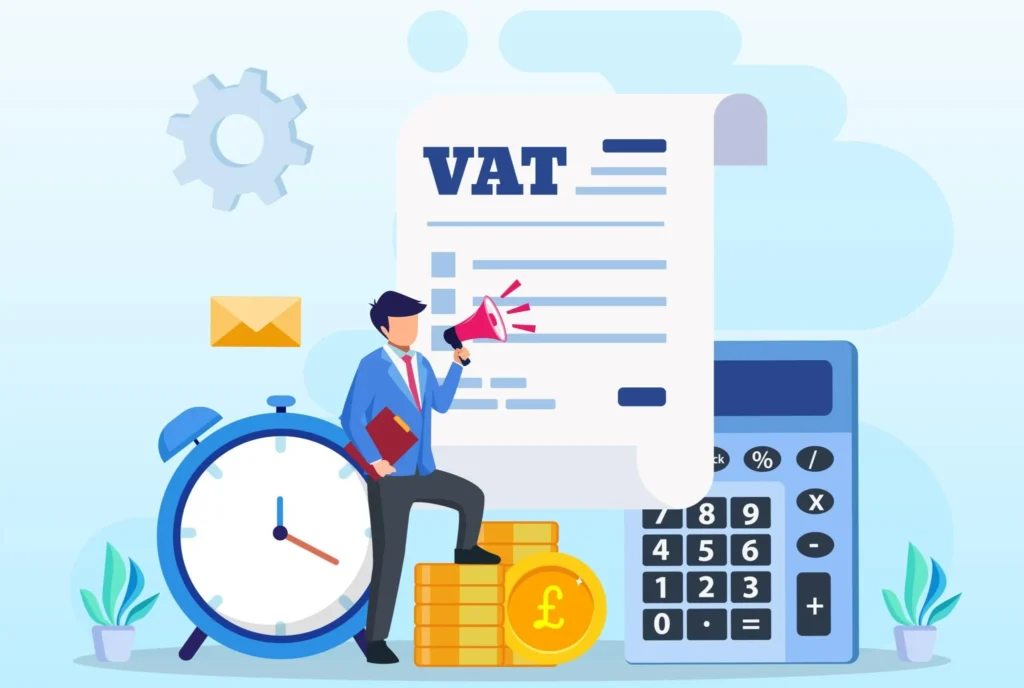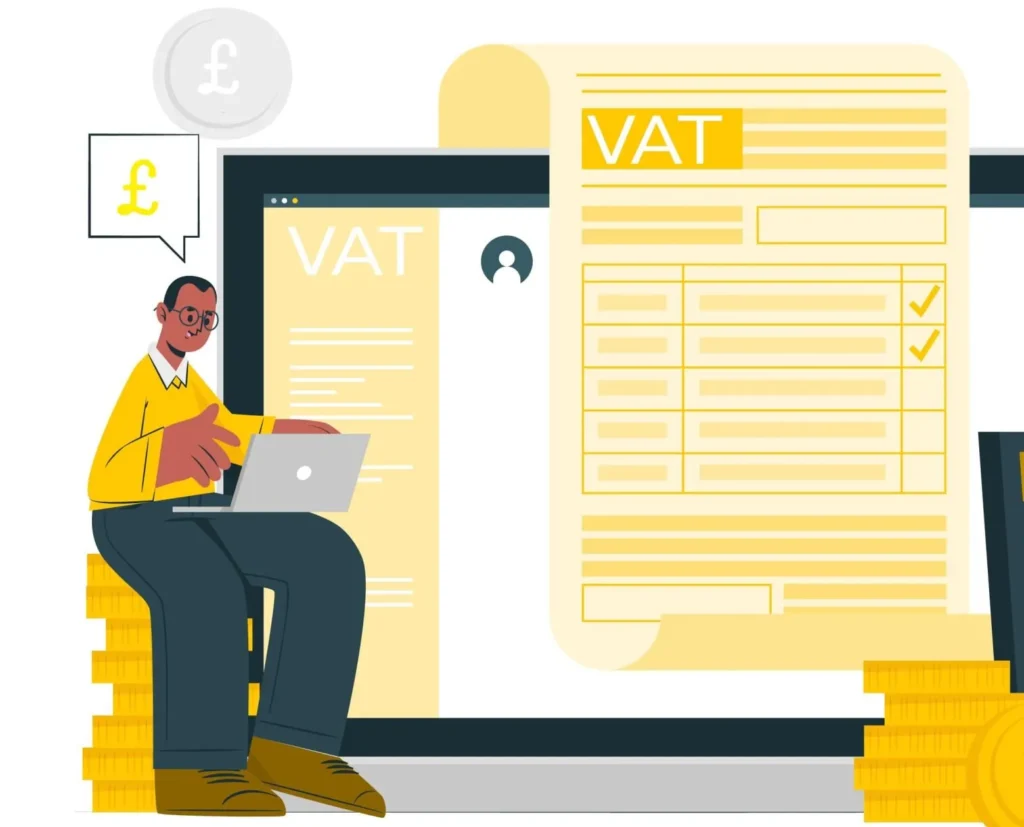The UK Flat Rate Scheme for Value Added Tax (VAT) is a simplified method of calculating VAT payments designed to benefit small businesses. Under this scheme, businesses pay a fixed rate of VAT to HMRC based on their turnover, rather than calculating the exact difference between VAT collected from customers and VAT paid on purchases.
We will explore the basics of the Flat Rate Scheme, joining the Flat rate scheme, disqualification for joining, leaving the scheme, benefits of the scheme and the process of calculating your VAT payment based on your business type and turnover in this article.
The Basics of the UK Flat Rate Scheme For VAT
The Flat Rate Scheme streamlines the VAT accounting process for small businesses in the UK. Here are the key features of the scheme:

Fixed Rate Payment
Businesses using the Flat Rate Scheme pay a predetermined percentage of their gross turnover to HMRC. The specific rate varies based on the nature of the business.
Keeping the Difference
Under this scheme, businesses can retain the difference between the VAT they charge their customers and the fixed rate they pay to HMRC. This can result in financial benefits for some businesses.
Limited Reclaim
Typically, businesses using the Flat Rate Scheme cannot reclaim the VAT paid on their purchases. However, there are exceptions for certain capital assets valued over £2,000, which can be reclaimed.
Joining the Flat Rate Scheme
To take advantage of the scheme’s benefits, businesses need to understand how to join it. We will explain the process for joining the UK Flat Rate Scheme.
1. Eligibility Check
Before considering joining the Flat Rate Scheme, it’s essential to ensure that your business meets the eligibility criteria. Your Value Added Tax (VAT) turnover, excluding VAT, must not exceed £150,000.
2. Online Registration
To join the scheme, you can Register for VAT online. This is a convenient way to initiate the process.
3. Completing VAT600 FRS
Alongside online registration, you have the option to fill out the VAT600 FRS form. You can obtain this form from HM Revenue and Customs (HMRC) or download it from their website.

4. Submitting the Form
After completing the VAT600 FRS form, you can either email it to frsapplications.vrs@hmrc.gov.uk or send it by post. Note that the address for sending the form is different from the one provided on the form itself. Send it to: BT VAT HM Revenue and Customs BX9 1WR
5. Consider the Annual Accounting Scheme
If you are interested in both the Flat Rate Scheme and the Annual Accounting Scheme, you can use the VAT600 AA/FRS form to apply for both simultaneously.
6. Confirmation of Enrolment
Once your application is processed, you will receive confirmation that you’ve successfully joined the Flat Rate Scheme. This confirmation will be sent through your VAT online account or by post if you did not apply online.
Disqualification for Joining the Scheme
There are certain exceptions that disqualify a business from participating in the Flat Rate Scheme, including:
- Recent Exit
If your business left the scheme within the last 12 months, you cannot rejoin immediately. A 12-month waiting period is mandatory.
- VAT Offence
If your business has committed a VAT offence, such as VAT evasion, in the last 12 months, you are ineligible to participate in the scheme.
- VAT Group or Business Division
If you became a member of or met the criteria for joining a VAT group or registered your business as a separate division for VAT purposes within the past 24 months, you are ineligible to participate in the Flat Rate Scheme.
- Closely Associated Businesses
If your business is closely associated with another business, you are not eligible for the scheme.
- Margin or Capital Goods VAT Schemes
If you have joined a margin or capital goods VAT scheme, you cannot simultaneously use the Flat Rate Scheme. It’s one or the other.
- Cash Accounting Scheme
The Flat Rate Scheme cannot be used in conjunction with the Cash Accounting Scheme. Instead, the Flat Rate Scheme employs its distinct cash-oriented approach for turnover calculation.
Leaving the Flat Rate Scheme
1. Ineligibility
If your business no longer meets the eligibility criteria for the Flat Rate Scheme, you are required to exit.
2. Exceeding Turnover Threshold
On the anniversary of joining, or if your turnover in the last 12 months exceeded £230,000 (including VAT) – or alternatively, if you anticipate that your turnover will surpass this limit within the upcoming 12 months, you are obliged to exit the scheme.
3. Expected High Income
If you foresee that your total income within the next 30 days, including VAT, will exceed £230,000, it is mandatory for you to discontinue your participation in the scheme.
4. Voluntary Exit
You have the option to leave the Flat Rate Scheme at any time, and you should do so if you are no longer eligible to be a part of it.

5. Request to HMRC
To leave the scheme, you must formally write to HMRC, notifying them of your decision to exit. They will confirm your leaving date.
6. Rejoining Waiting Period
If you choose to leave the Flat Rate Scheme, there is a mandatory waiting period of 12 months before you can rejoin the scheme.
7.Address for Leaving Request
Send your request to leave the scheme to the following address: VAT HM Revenue and Customs, BX9 1WR.
The Benefits of the Flat Rate Scheme
The Flat Rate Scheme offers several advantages for eligible businesses:
- Simplified VAT Accounting
The scheme significantly simplifies the VAT accounting process, reducing the administrative burden for small businesses.
- Potential Cost Savings
Some businesses may benefit from the scheme’s fixed rate structure, resulting in lower VAT payments compared to the standard method.
- Cash Flow Management
Predictable VAT payments help with cash flow management, making it easier for businesses to budget for their tax obligations.
- Time Savings
By avoiding the need to meticulously account for input and output VAT, businesses can save time and resources.
Calculating Your VAT Payment
The VAT flat rate used depends on your business type and whether you are a ‘limited cost business.’ If your business spends a small amount on goods, you fall into this category. A ‘limited cost business’ is defined as one where goods costs are less than either 2% of your turnover or £1,000 annually if your costs are more than 2%. In this case, you pay a higher rate of 16.5%.

For businesses that are not ‘limited cost businesses,’ the flat rate is determined based on their business type. HMRC provides a list of flat rates for various business categories, each associated with a specific VAT percentage.
To calculate your VAT payment, follow these steps:
Step 1: Determine Your VAT Inclusive Turnover
VAT inclusive turnover is different from the standard VAT turnover. It includes both your business income, such as sales, and the VAT paid on that income.
Step 2: Apply the Appropriate Flat Rate
Based on your business type and whether you qualify as a ‘limited cost business,’ apply the relevant flat rate from the table provided earlier.
Step 3: Calculate the VAT Payment
Multiply your VAT inclusive turnover by the applicable flat rate. This will give you the amount you need to pay in VAT under the Flat Rate Scheme.
Example,
Let’s say you are a photographer, and you bill a customer £2,000, adding VAT at 20%, making the total amount £2,400. As a photographer, your flat rate for the business is 11%.
To calculate your flat rate payment:
- VAT inclusive turnover: £2,400
- Flat rate for photographers: 11%
VAT Payment = 11% of £2,400 = £264
Conclusion
The UK Flat Rate Scheme for VAT provides a valuable option for small businesses with a turnover of £150,000 or less (excluding VAT). This scheme simplifies VAT accounting, offers potential cost savings, and helps with cash flow management.
However, it’s essential for businesses to carefully consider whether this scheme aligns with their financial situation and consult with a tax professional if needed. Joining the scheme involves an application process, and compliance with HMRC guidelines is essential to ensure its successful implementation.
By understanding the details of the Flat Rate Scheme, businesses can make informed decisions about their VAT obligations and potentially improve their financial management.